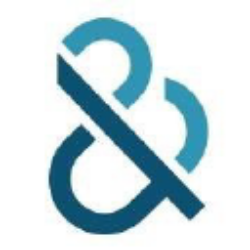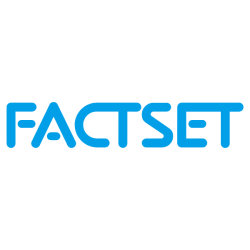DNB

Dun & Bradstreet Holdings, Inc.
DNB
(1.5)12,28 USD
-2.95% ROA
-1.03% ROE
-147.01x PER
5.027.524.680,00 USD
110.18% DER
1.76% Yield
-1.46% NPM
Dun & Bradstreet Holdings, Inc. Stock Analysis
Dun & Bradstreet Holdings, Inc. Fundamental Analysis
Fundamental analysis in stock investing is like studying the foundation of a house before buying it. It involves looking at a company's financial health, like its earnings, assets, and debts, to determine if it's a good investment based on its fundamental strength and potential for growth.
| # | Analysis | Rating |
|---|---|---|
| 1 |
Revenue Growth
Over the past five years, this company's revenue has consistently increased, demonstrating a robust financial performance that makes it an appealing opportunity. |
|
| 2 |
Net Profit Growth
This company has consistently achieved strong net profit growth over the past five years, demonstrating a solid financial performance and making it an appealing investment option. |
|
| 3 |
PBV
The stock's PBV ratio (1.25x) indicates a justifiable valuation, presenting a compelling choice for investors seeking reasonable returns. |
|
| 4 |
Dividend Growth
With a history of consistent dividend increases over the last three years, the company has proven to be a reliable choice for investors seeking reliable income. |
|
| 5 |
ROE
Negative ROE (-0.75%) indicates poor financial performance, raising concerns about profitability and efficiency in utilizing shareholders' equity. |
|
| 6 |
ROA
The stock's ROA (-2.41%) suggests that it's struggling to generate profits from its assets, making it a risky choice for investment. |
|
| 7 |
DER
The stock is burdened with a heavy load of debt (107%), making it financially unstable and potentially risky for investors. |
|
| 8 |
Assets Growth
Company's revenue has remained stagnant over the past three years, indicating a lack of growth and making it a less favorable option. |
|
| 9 |
Graham Number
The company's Graham number suggests that its stock price is overestimated, implying that it may not be a promising investment opportunity. |
|
| 10 |
Dividend
Investors should be cautious as the company hasn't distributed dividends in the last three years, possibly indicating financial challenges. |
|
| 11 |
Buffet Intrinsic Value
The company's stock appears overvalued (-2.528) by Warren Buffett's formula, suggesting a less favorable investment opportunity as its market price exceeds its estimated intrinsic value. |
Dun & Bradstreet Holdings, Inc. Technical Analysis
Technical analysis in stock investing is like reading the patterns on a weather map to predict future weather conditions. It involves studying past stock price movements and trading volumes to make predictions about where a stock's price might go next, without necessarily looking at the company's financial health.
| # | Analysis | Recommendation |
|---|---|---|
| 1 | Awesome Oscillator | Buy |
| 2 | MACD | Buy |
| 3 | RSI | Hold |
| 4 | Stoch RSI | Sell |
Dun & Bradstreet Holdings, Inc. Price Chart
Financial Statements
Financial statements are like report cards for companies. They show how much money a company makes (income statement), what it owns and owes (balance sheet), and where it spends its money (cash flow statement), helping stock investors understand if a company is healthy and worth investing in.
Income Statements
An income statement for a company is like a scoreboard for its profits and losses. It shows how much money the company made (revenue) and how much it spent to make that money (expenses), helping stock investors see if a company is making a profit or not.
Revenue in stock investing is the total amount of money a company earns from its sales, and it's a key factor that investors consider to assess a company's financial performance and growth potential.
| Year | Revenue | Growth |
|---|---|---|
| 2012 | 1.663.000.000 | |
| 2013 | 1.558.400.000 | -6.71% |
| 2014 | 1.584.500.000 | 1.65% |
| 2015 | 1.637.100.000 | 3.21% |
| 2016 | 1.703.700.000 | 3.91% |
| 2017 | 1.742.500.000 | 2.23% |
| 2018 | 1.716.400.000 | -1.52% |
| 2019 | 1.413.900.000 | -21.39% |
| 2020 | 1.738.100.000 | 18.65% |
| 2021 | 2.165.600.000 | 19.74% |
| 2022 | 2.224.600.000 | 2.65% |
| 2023 | 2.354.000.000 | 5.5% |
| 2023 | 2.314.000.000 | -1.73% |
| 2024 | 2.304.800.000 | -0.4% |
Research and Development Expenses are the costs a company incurs to create and improve its products or services, which can be important for investors to evaluate a company's innovation and potential for future growth.
| Year | Research and Development Expenses | Growth |
|---|---|---|
| 2012 | 49.200.000 | |
| 2013 | 45.900.000 | -7.19% |
| 2014 | 38.400.000 | -19.53% |
| 2015 | 28.500.000 | -34.74% |
| 2016 | 30.800.000 | 7.47% |
| 2017 | 34.600.000 | 10.98% |
| 2018 | 0 | 0% |
| 2019 | 0 | 0% |
| 2020 | 0 | 0% |
| 2021 | 0 | 0% |
| 2022 | 0 | 0% |
| 2023 | 0 | 0% |
| 2023 | 0 | 0% |
| 2024 | 0 | 0% |
General and Administrative Expenses are the costs a company incurs to run its day-to-day operations, such as office rent, salaries, and utilities, which investors consider to understand a company's overall efficiency and management effectiveness.
| Year | General and Administrative Expenses | Growth |
|---|---|---|
| 2012 | 0 | |
| 2013 | 0 | 0% |
| 2014 | 0 | 0% |
| 2015 | 0 | 0% |
| 2016 | 0 | 0% |
| 2017 | 672.400.000 | 100% |
| 2018 | 610.000.000 | -10.23% |
| 2019 | 0 | 0% |
| 2020 | 0 | 0% |
| 2021 | 0 | 0% |
| 2022 | 0 | 0% |
| 2023 | 0 | 0% |
| 2023 | 0 | 0% |
| 2024 | 0 | 0% |
EBITDA stands for Earnings Before Interest, Taxes, Depreciation, and Amortization. It is a measure that helps stock investors analyze a company's profitability by looking at its earnings without considering certain expenses. This helps to get a clearer picture of the company's financial performance and its ability to generate cash flow.
| Year | EBITDA | Growth |
|---|---|---|
| 2012 | 490.600.000 | |
| 2013 | 487.500.000 | -0.64% |
| 2014 | 447.700.000 | -8.89% |
| 2015 | 415.400.000 | -7.78% |
| 2016 | 424.000.000 | 2.03% |
| 2017 | 462.100.000 | 8.24% |
| 2018 | 516.200.000 | 10.48% |
| 2019 | 109.300.000 | -372.28% |
| 2020 | 681.500.000 | 83.96% |
| 2021 | 841.200.000 | 18.98% |
| 2022 | 766.400.000 | -9.76% |
| 2023 | 795.200.000 | 3.62% |
| 2023 | 727.600.000 | -9.29% |
| 2024 | 790.800.000 | 7.99% |
Gross profit is the money a company makes from selling its products or services after subtracting the cost of producing or providing them, and it is an important measure for investors to understand a company's profitability.
| Year | Gross Profit | Growth |
|---|---|---|
| 2012 | 1.142.000.000 | |
| 2013 | 1.064.300.000 | -7.3% |
| 2014 | 1.061.700.001 | -0.24% |
| 2015 | 1.094.600.000 | 3.01% |
| 2016 | 1.163.200.000 | 5.9% |
| 2017 | 1.089.500.000 | -6.76% |
| 2018 | 1.064.300.000 | -2.37% |
| 2019 | 483.000.000 | -120.35% |
| 2020 | 63.000.000 | -666.67% |
| 2021 | 1.501.300.000 | 95.8% |
| 2022 | 1.503.200.000 | 0.13% |
| 2023 | 1.528.000.000 | 1.62% |
| 2023 | 896.200.000 | -70.5% |
| 2024 | 859.200.000 | -4.31% |
Net income in stock investing is like the money a company actually gets to keep as profit after paying all its bills, and it's an important measure to understand how well a company is doing financially.
| Year | Net Profit | Growth |
|---|---|---|
| 2012 | 295.500.000 | |
| 2013 | 248.700.000 | -18.82% |
| 2014 | 284.300.000 | 12.52% |
| 2015 | 204.200.000 | -39.23% |
| 2016 | 101.500.000 | -101.18% |
| 2017 | 140.900.000 | 27.96% |
| 2018 | 288.100.000 | 51.09% |
| 2019 | -557.700.000 | 151.66% |
| 2020 | -108.800.000 | -412.59% |
| 2021 | -68.600.000 | -58.6% |
| 2022 | 1.600.000 | 4387.5% |
| 2023 | 17.600.000 | 90.91% |
| 2023 | -47.000.000 | 137.45% |
| 2024 | -65.599.996 | 28.35% |
EPS, or earnings per share, is a measure that shows how much profit a company has earned for each outstanding share of its stock, and it is important for stock investors as it helps understand the profitability of a company and compare it with other companies in the market.
| Year | Earning per Share (EPS) | Growth |
|---|---|---|
| 2012 | 7 | |
| 2013 | 7 | -16.67% |
| 2014 | 8 | 14.29% |
| 2015 | 6 | -40% |
| 2016 | 3 | -150% |
| 2017 | 0 | 0% |
| 2018 | 1 | 0% |
| 2019 | -1 | 100% |
| 2020 | 0 | 0% |
| 2021 | 0 | 0% |
| 2022 | 0 | 0% |
| 2023 | 0 | 0% |
| 2023 | 0 | 0% |
| 2024 | 0 | 0% |
Cashflow Statements
Cashflow statements show the movement of money in and out of a company, helping stock investors understand how much money a company makes and spends. By examining cashflow statements, investors can assess if a company is generating enough cash to pay its bills, invest in growth, and provide returns to stockholders.
Free cash flow is the leftover cash that a company generates after covering its operating expenses and capital expenditures, which is important for stock investors as it shows how much money a company has available to invest in growth, pay dividends, or reduce debt.
| Year | Free Cashflow | Growth |
|---|---|---|
| 2012 | 350.800.000 | |
| 2013 | 326.200.000 | -7.54% |
| 2014 | 305.700.000 | -6.71% |
| 2015 | 330.400.000 | 7.48% |
| 2016 | 308.300.000 | -7.17% |
| 2017 | 224.400.000 | -37.39% |
| 2018 | 267.200.000 | 16.02% |
| 2019 | -131.900.000 | 302.58% |
| 2020 | 74.200.000 | 277.76% |
| 2021 | 323.300.000 | 77.05% |
| 2022 | 319.200.000 | -1.28% |
| 2023 | 33.700.000 | -847.18% |
| 2023 | 252.800.000 | 86.67% |
| 2024 | -17.100.000 | 1578.36% |
Operating cash flow represents the cash generated or consumed by a company's day-to-day operations, excluding external investing or financing activities, and is crucial for stock investors as it shows how much cash a company is generating from its core business operations.
| Year | Operating Cashflow | Growth |
|---|---|---|
| 2012 | 357.800.000 | |
| 2013 | 333.300.000 | -7.35% |
| 2014 | 315.500.000 | -5.64% |
| 2015 | 343.200.000 | 8.07% |
| 2016 | 322.700.000 | -6.35% |
| 2017 | 286.500.000 | -12.64% |
| 2018 | 325.400.000 | 11.95% |
| 2019 | -63.000.000 | 616.51% |
| 2020 | 195.600.000 | 132.21% |
| 2021 | 503.700.000 | 61.17% |
| 2022 | 537.100.000 | 6.22% |
| 2023 | 69.100.000 | -677.28% |
| 2023 | 452.200.000 | 84.72% |
| 2024 | 36.700.000 | -1132.15% |
Capex, short for capital expenditures, refers to the money a company spends on acquiring or upgrading tangible assets like buildings, equipment, or technology, which is important for stock investors as it indicates how much a company is investing in its infrastructure to support future growth and profitability.
| Year | Capital Expenditure | Growth |
|---|---|---|
| 2012 | 7.000.000 | |
| 2013 | 7.100.000 | 1.41% |
| 2014 | 9.800.000 | 27.55% |
| 2015 | 12.800.000 | 23.44% |
| 2016 | 14.400.000 | 11.11% |
| 2017 | 62.100.000 | 76.81% |
| 2018 | 58.200.000 | -6.7% |
| 2019 | 68.900.000 | 15.53% |
| 2020 | 121.400.000 | 43.25% |
| 2021 | 180.400.000 | 32.71% |
| 2022 | 217.900.000 | 17.21% |
| 2023 | 35.400.000 | -515.54% |
| 2023 | 199.400.000 | 82.25% |
| 2024 | 53.800.000 | -270.63% |
Balance Sheet
Balance sheets provide a snapshot of a company's financial health and its assets (such as cash, inventory, and property) and liabilities (like debts and obligations) at a specific point in time. For stock investors, balance sheets help assess the company's overall worth and evaluate its ability to meet financial obligations and support future growth.
Equity refers to the ownership interest or stake that shareholders have in a company, representing their claim on its assets and earnings after all debts and liabilities are paid.
| Year | Equity | Growth |
|---|---|---|
| 2012 | -1.014.300.000 | |
| 2013 | -1.042.299.999 | 2.69% |
| 2014 | -1.194.600.000 | 12.75% |
| 2015 | -1.105.300.000 | -8.08% |
| 2016 | -987.800.000 | -11.9% |
| 2017 | -811.200.000 | -21.77% |
| 2018 | -689.900.000 | -17.58% |
| 2019 | 2.609.500.000 | 126.44% |
| 2020 | 3.579.200.000 | 27.09% |
| 2021 | 3.745.300.000 | 4.43% |
| 2022 | 3.508.400.000 | -6.75% |
| 2023 | 3.431.600.000 | -2.24% |
| 2023 | 3.423.700.000 | -0.23% |
| 2024 | 3.341.600.000 | -2.46% |
Assets represent the valuable resources that a company owns, such as cash, inventory, property, and equipment, and understanding a company's assets helps investors assess its value and potential for generating future profits.
| Year | Assets | Growth |
|---|---|---|
| 2012 | 1.991.800.000 | |
| 2013 | 1.890.300.000 | -5.37% |
| 2014 | 1.986.200.000 | 4.83% |
| 2015 | 2.266.500.000 | 12.37% |
| 2016 | 2.209.200.000 | -2.59% |
| 2017 | 2.480.900.000 | 10.95% |
| 2018 | 1.820.900.000 | -36.25% |
| 2019 | 9.112.800.000 | 80.02% |
| 2020 | 9.219.400.000 | 1.16% |
| 2021 | 9.997.200.000 | 7.78% |
| 2022 | 9.471.900.000 | -5.55% |
| 2023 | 9.135.900.000 | -3.68% |
| 2023 | 9.135.200.000 | -0.01% |
| 2024 | 8.956.800.000 | -1.99% |
Liabilities refer to the financial obligations or debts that a company owes to creditors or external parties, and understanding a company's liabilities is important for investors as it helps assess the company's financial risk and ability to meet its obligations.
| Year | Liabilities | Growth |
|---|---|---|
| 2012 | 3.006.100.000 | |
| 2013 | 2.932.600.000 | -2.51% |
| 2014 | 3.180.800.000 | 7.8% |
| 2015 | 3.371.800.000 | 5.66% |
| 2016 | 3.197.000.000 | -5.47% |
| 2017 | 3.292.100.000 | 2.89% |
| 2018 | 2.510.800.000 | -31.12% |
| 2019 | 6.503.300.000 | 61.39% |
| 2020 | 5.640.200.000 | -15.3% |
| 2021 | 6.251.900.000 | 9.78% |
| 2022 | 5.963.500.000 | -4.84% |
| 2023 | 5.704.300.000 | -4.54% |
| 2023 | 5.711.500.000 | 0.13% |
| 2024 | 5.615.200.000 | -1.71% |
Dun & Bradstreet Holdings, Inc. Financial Ratio (TTM)
Valuation Metrics
- Revenue per Share
- 5.45
- Net Income per Share
- -0.08
- Price to Earning Ratio
- -147.01x
- Price To Sales Ratio
- 2.13x
- POCF Ratio
- 11.37
- PFCF Ratio
- 23.19
- Price to Book Ratio
- 1.48
- EV to Sales
- 3.59
- EV Over EBITDA
- 10.33
- EV to Operating CashFlow
- 19.54
- EV to FreeCashFlow
- 39.05
- Earnings Yield
- -0.01
- FreeCashFlow Yield
- 0.04
- Market Cap
- 5,03 Bil.
- Enterprise Value
- 8,47 Bil.
- Graham Number
- 3.66
- Graham NetNet
- -11.97
Income Statement Metrics
- Net Income per Share
- -0.08
- Income Quality
- -13.29
- ROE
- -0.01
- Return On Assets
- -0
- Return On Capital Employed
- 0.03
- Net Income per EBT
- 0.45
- EBT Per Ebit
- -0.31
- Ebit per Revenue
- 0.1
- Effective Tax Rate
- 0.56
Margins
- Sales, General, & Administrative to Revenue
- 0
- Research & Developement to Revenue
- 0
- Stock Based Compensation to Revenue
- 0.03
- Gross Profit Margin
- 0.38
- Operating Profit Margin
- 0.1
- Pretax Profit Margin
- -0.03
- Net Profit Margin
- -0.01
Dividends
- Dividend Yield
- 0.02
- Dividend Yield %
- 1.76
- Payout Ratio
- -2.6
- Dividend Per Share
- 0.2
Operating Metrics
- Operating Cashflow per Share
- 1
- Free CashFlow per Share
- 0.5
- Capex to Operating CashFlow
- 0.5
- Capex to Revenue
- 0.09
- Capex to Depreciation
- 0.37
- Return on Invested Capital
- 0.01
- Return on Tangible Assets
- -0.03
- Days Sales Outstanding
- 31.56
- Days Payables Outstanding
- 24.23
- Days of Inventory on Hand
- -11.74
- Receivables Turnover
- 11.57
- Payables Turnover
- 15.07
- Inventory Turnover
- -31.1
- Capex per Share
- 0.5
Balance Sheet
- Cash per Share
- 0,71
- Book Value per Share
- 7,72
- Tangible Book Value per Share
- -10.35
- Shareholders Equity per Share
- 7.69
- Interest Debt per Share
- 9.06
- Debt to Equity
- 1.1
- Debt to Assets
- 0.41
- Net Debt to EBITDA
- 4.2
- Current Ratio
- 0.71
- Tangible Asset Value
- -4,48 Bil.
- Net Current Asset Value
- -4,95 Bil.
- Invested Capital
- 7690700000
- Working Capital
- -0,27 Bil.
- Intangibles to Total Assets
- 0.87
- Average Receivables
- 0,19 Bil.
- Average Payables
- 0,10 Bil.
- Average Inventory
- -44599999.5
- Debt to Market Cap
- 0.73
Dividends
Dividends in stock investing are like rewards that companies give to their shareholders. They are a portion of the company's profits distributed to investors, typically in the form of cash payments, as a way for them to share in the company's success.
| Year | Dividends | Growth |
|---|---|---|
| 2022 | 0 | |
| 2023 | 0 | 0% |
| 2024 | 0 | 0% |
Dun & Bradstreet Holdings, Inc. Profile
About Dun & Bradstreet Holdings, Inc.
Dun & Bradstreet Holdings, Inc. provides business decisioning data and analytics in North America and internationally. It offers finance and risk solutions, including D&B Finance Analytics, an online application that offers clients real time access to its information, comprehensive monitoring, and portfolio analysis; D&B Direct, an application programming interface (API) that delivers risk and financial data directly into enterprise applications for real-time credit decision making; D&B Small Business, a suite of powerful tools that allows SMBs to monitor and build their business credit file; D&B Enterprise Risk Assessment Manager, a solution for managing and automating credit decisioning and reporting; and InfoTorg, an online SaaS application. The company also provides risk and compliance solutions, such as D&B Supplier Risk Manager that provides insights to help certify, monitor, analyze, and mitigate risk across the supply chain; D&B Onboard to provide comprehensive insights into businesses to facilitate KYC/AML compliance, as well as to minimize financial, legal, and reputational risk exposure; and D&B Beneficial Ownership that offers risk intelligence on ultimate beneficial ownership. It offers sales and marketing solutions, including D&B Connect, a self-service data management platform; D&B Optimizer, an integrated data management solution; D&B Rev.Up ABX, an open and agnostic platform that aligns marketing and sales teams to deliver an optimal and coordinated buying; D&B Hoovers, a sales intelligence solution; D&B Audience Targeting, which helps clients to reach the right audiences with the right messages; D&B Visitor Intelligence that turns web visitors into leads; and D&B Direct, an API-enabled data management solution that delivers valuable customer insights into CRMs, marketing automation, and other marketing applications for on-demand business intelligence. The company was founded in 1841 and is headquartered in Jacksonville, Florida.
- CEO
- Mr. Anthony M. Jabbour
- Employee
- 6.414
- Address
-
5335 Gate Parkway
Jacksonville, 32256
Dun & Bradstreet Holdings, Inc. Executives & BODs
| # | Name | Age |
|---|---|---|
| 1 |
Ms. Michele Caselnova Chief Sustainability & Communications Officer |
70 |
| 2 |
Ms. Virginia Gomez President of North America |
70 |
| 3 |
Mr. Michael Manos Chief Technology Officer |
70 |
| 4 |
Mr. Bryan T. Hipsher Chief Financial Officer, Executive Vice President & Treasurer |
70 |
| 5 |
Mr. Joseph A. Reinhardt III Chief Legal Officer |
70 |
| 6 |
Ms. Roslynn Williams Chief People Officer |
70 |
| 7 |
Mr. Neeraj Sahai President of International |
70 |
| 8 |
Mr. William Patrick Foley II Executive Chairman |
70 |
| 9 |
Mr. Anthony Pietrontone Jr. Chief Accounting Officer & Corporate Controller |
70 |
| 10 |
Mr. Anthony M. Jabbour Chief Executive Officer & Director |
70 |







